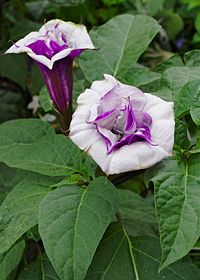
Photo from wikipedia
Pulmonary arterial hypertension (PAH) is a progressive and rare disease without obvious clinical symptoms that shares characteristics with pulmonary vascular remodeling. Right heart failure in the terminal phase of PAH… Click to show full abstract
Pulmonary arterial hypertension (PAH) is a progressive and rare disease without obvious clinical symptoms that shares characteristics with pulmonary vascular remodeling. Right heart failure in the terminal phase of PAH seriously threatens the lives of patients. This review attempts to comprehensively outline the current state of knowledge on PAH its pathology, pathogenesis, natural medicines therapy, mechanisms and clinical studies to provide potential treatment strategies. Although PAH and pulmonary hypertension have similar pathological features, PAH exhibits significantly elevated pulmonary vascular resistance caused by vascular stenosis and occlusion. Currently, the pathogenesis of PAH is thought to involve multiple factors, primarily including genetic/epigenetic factors, vascular cellular dysregulation, metabolic dysfunction, even inflammation and immunization. Yet many issues regarding PAH need to be clarified, such as the “oestrogen paradox”. About 25 kinds monomers derived from natural medicine have been verified to protect against to PAH via modulating BMPR2/Smad, HIF-1α, PI3K/Akt/mTOR and eNOS/NO/cGMP signalling pathways. Yet limited and single PAH animal models may not corroborate the efficacy of natural medicines, and those natural compounds how to regulate crucial genes, proteins and even microRNA and lncRNA still need to put great attention. Additionally, pharmacokinetic studies and safety evaluation of natural medicines for the treatment of PAH should be undertaken in future studies. Meanwhile, methods for validating the efficacy of natural drugs in multiple PAH animal models and precise clinical design are also urgently needed to promote advances in PAH. Graphical Abstract
Journal Title: Chinese Medicine
Year Published: 2022
Link to full text (if available)
Share on Social Media: Sign Up to like & get
recommendations!